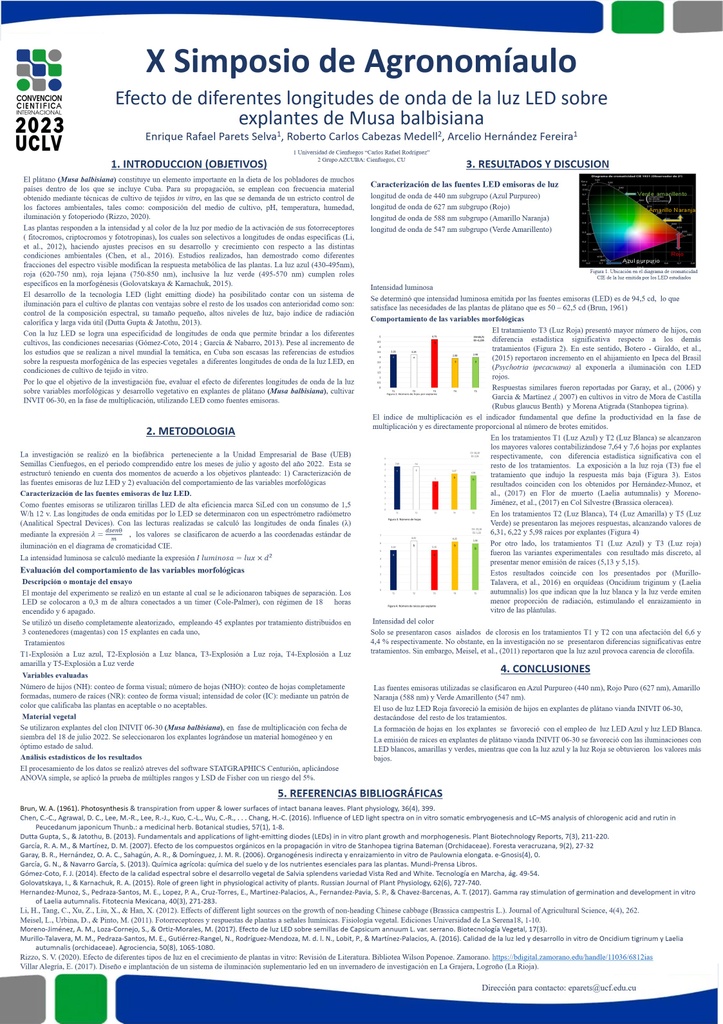Executive Secretary

IX Conferencia Científica Internacional sobre Desarrollo Agropecuario y Sostenibilidad
X Simposio de Agronomía

Resumen
RESUMEN
La investigación se desarrolló en la biofábrica de Cienfuegos. La misma tuvo como objetivo evaluar el efecto de diferentes longitudes de onda de la luz, emitida por diodos (LED), sobre explantes de plátano (Musa balbisiana) INVIT 06-30, en fase de multiplicación in vitro. Para ello se empleó un diseño completamente aleatorizado con 5 tratamientos y tres replicas. Los tratamientos estudiados fueron: exposición a la luz azul (440nm), exposición a la luz blanca (380-750nm), exposición a la luz roja (627nm), exposición a la luz amarilla (588nm) y exposición a la luz verde (547nm). La luz emitida por los LED se caracterizó empleando un espectrómetro radiómetro de campo marca ASD (Analitical Spectral Devices). Se evaluaron las variables morfológicas número de hijos, número de hojas, número de raíces e intensidad del color. Se pudo evidenciar que la exposición a la luz roja estimuló la formación de hijos con una diferencia estadística significativa con los demás tratamientos, mientras que las longitudes de onda que pertenecían a la luz amarilla y la luz blanca fueron las que favorecieron el desarrollo de las raíces. Por otro lado, los tratamientos que mayor influencia tuvieron sobre el número de hojas fueron la exposición a la luz azul y luz blanca sin diferencia estadística entre ellos. Se demostró la factibilidad de utilización de la tecnología LED en la biofabrica.
Abstract
ABSTRACT
The research was carried out at the Cienfuegos biofactory. Its objective was to evaluate the effect of different wavelengths of light, emitted by diodes (LED), on banana explants (Musa balbisiana) INVIT 06-30, in the in vitro multiplication phase. For this, a completely randomized design was used with 5 treatments and three replications. The treatments studied were: exposure to blue light (440nm), exposure to white light (380-750nm), exposure to red light (627nm), exposure to yellow light (588nm) and exposure to green light (547nm). ). The light emitted by the LEDs was characterized using an ASD (Analytical Spectral Devices) field radiometer spectrometer. The morphological variables number of offspring, number of leaves, number of roots and color intensity were evaluated. It was evident that exposure to red light stimulated the formation of offspring with a statistically significant difference with the other treatments, while the wavelengths that belonged to yellow light and white light were those that favored the development of roots. . On the other hand, the treatments that had the greatest influence on the number of leaves were exposure to blue light and white light with no statistical difference between them. The feasibility of using LED technology in the biofactory was demonstrated.
Sobre el ponente

Enrique Rafael Parets Selva

Discussion

